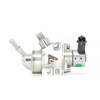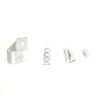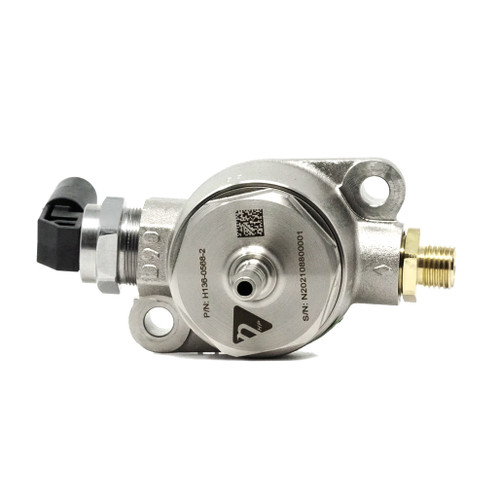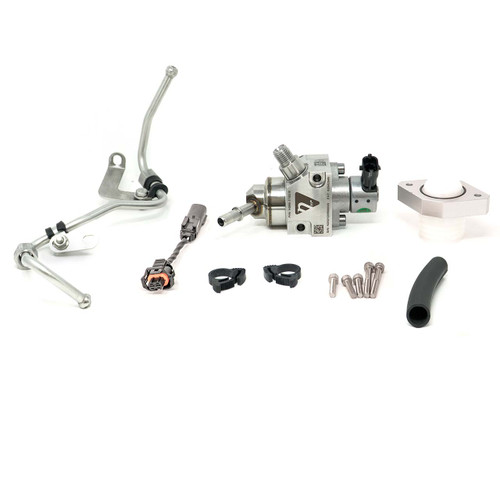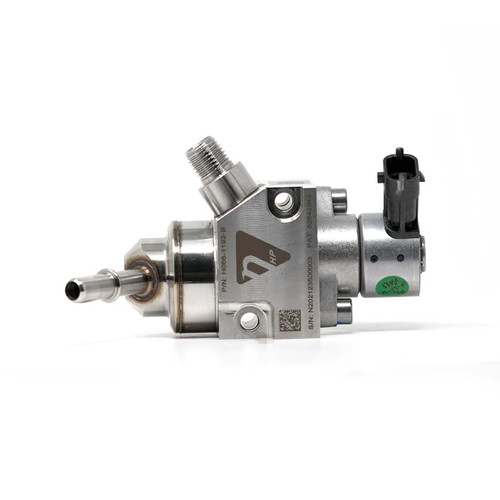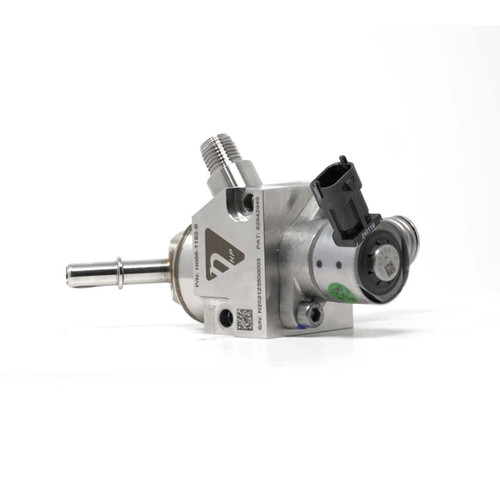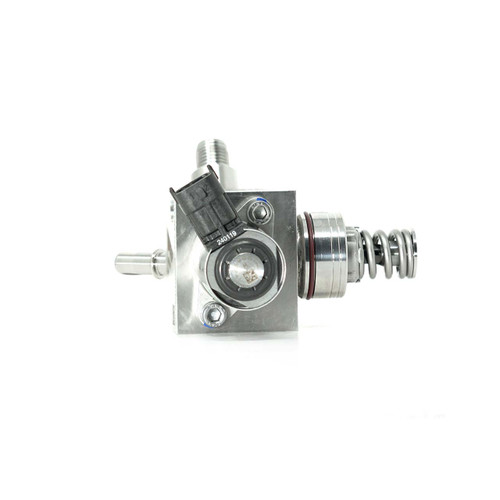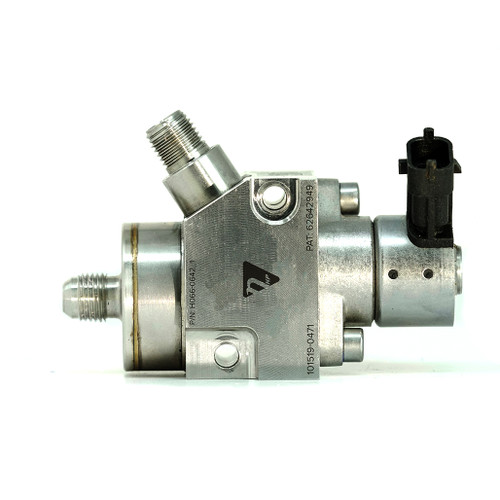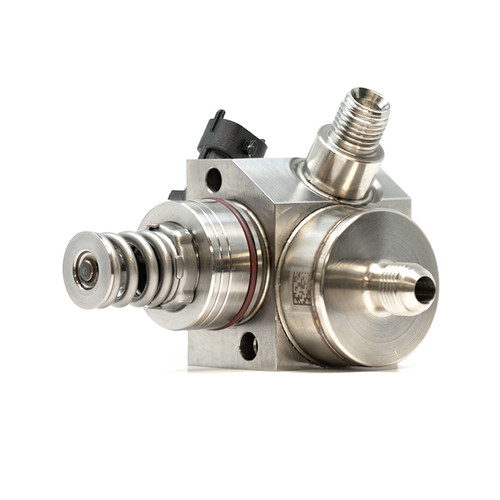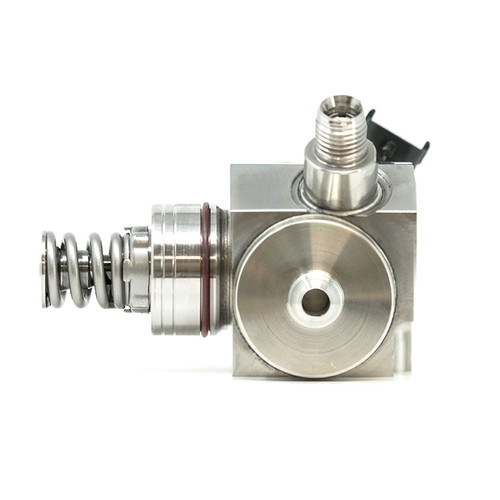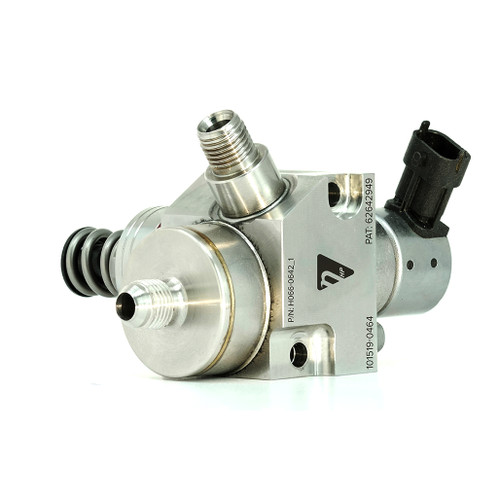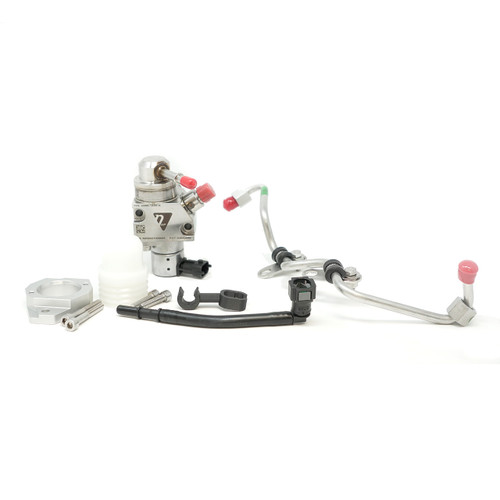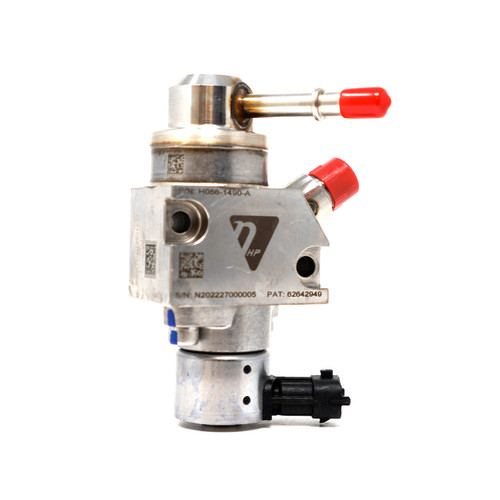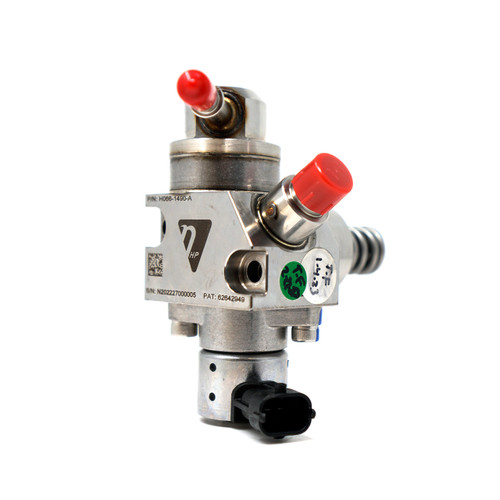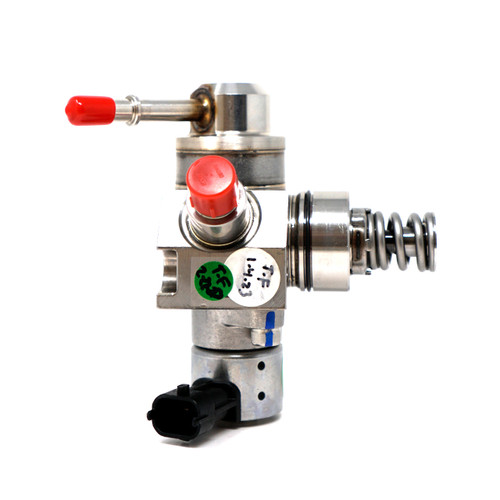What sets the Nostrum 5.0L Coyote HPFP kit apart:
- Designed specifically for this application.
- 100% production tested.
- Direct bolt on
- Proprietary CFD Optimized damper housing with integrated SAE quick-connect fittings.
- Welded Stainless Steel Construction
- Kit designed to be fully reversible to factory fuel system (no modification of OEM parts, no intake trimming)
- Lifetime warranty
- Retains OEM low pressure fuel line.
Want to run pump E85 or boost your Coyote but are worried about fueling? Nostrum is here to help with our upgraded HPFP for the 5.0 Coyote platform! This HPFP flows 47% more fuel than the factory pump, unlocking ethanol tuning options and giving you even more horsepower potential, just waiting to be unlocked with your favorite power adder.
All Nostrum products come complete with everything you need inside the box, including detailed installation instructions. Nostrum backs every part we sell with a limited lifetime warranty. Tuning guides are also available for your dealer or tuner. We have customer service and calibration engineers on staff to provide you with any support that you may need, from installation to tuning.
What is in the box:
- Big Bore HPFP - fully welded, stainless steel construction (H066-1437)
- Custom designed all-new vacuum brazed high-pressure stainless-steel tube assemblies for easy hardware integration with the kit
- Anti-vibration P-clamps included to minimize NVH in the system
- locating Bracket
- M6 forward bracket bolt
- M5 forward bracket nut
- M6 flange mounting nut
- M6 rear bracket mounting nut
- M6 pump to flange bolts
- flange installation tool
- flange O-ring
- pump mounting flange
- electrical harness/connector
- Installation guide
- Data card
- Certificate of authenticity
Vehicle application list:
- 18+ Ford Mustang GT
- 21+ Ford Mustang Mach 1
Recommended tuners:
Dyno graph sponsorship results:
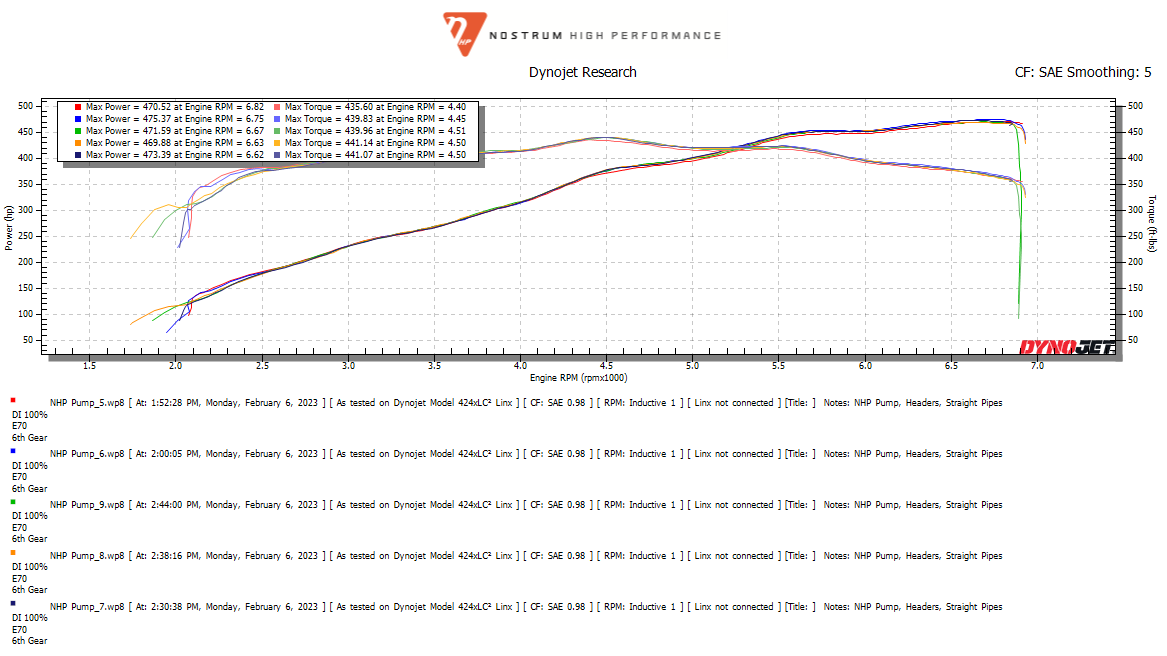
Anthony's Coyote Mustang made a healthy 475whp/440tq on Pump E85 with an intake, exhaust and Nostrum HPFP - using only direct injection!
*Horsepower and Torque numbers are approximate and can vary significantly depending on numerous factors including what supporting upgrades are done to the vehicle, ambient temperature, elevation, road surface, tire selection & condition, fuel octane and quality, vehicle weight, and more. The advertised numbers herein are based on optimal conditions and utilizing proper supporting modifications. Your results may vary.
Frequently ask questions:
Q: Why don't I see horsepower gains with just a pump?
A: Fundamentally we have to look at the entire fueling system and "where" in the rpm range the limits are. DI fuel systems in stock trim are often pump limited at middle rpm (peak torque) and injector limited at high rpm (peak power). This is due to engine speed. HPFPs are mechanically driven pumps (driven by the camshaft pump lobe spinning at ½ crank speed) and are RPM (engine speed) dependent. Many of the quoted flow increases in the aftermarket are purely displacement based comparisons: where by example the big bore pump has a piston diameter X% larger than the "stock" pump or the swept displacement ((3.14*(radius)^2)*(stroke))of the pump Y% larger than the stock pump. The larger displacement of the pump really shines in low rpm, where the fuel injector has plenty of time (crank angle degrees) to inject fuel. As the engines starts to approach peak power the engine speed starts to become quite short and is limiting the injection duration (crank angle degrees) for the injection event (which is another reason why we like to increase fuel pressure up high!).
Q: Why do your numbers say I will make less horsepower on E85 than 93 octane?
A: Great question! The numbers we list in the product descriptions are similar to the numbers a turbo charger lists for air flow. The numbers are the "fuel system capacity to generate power" regardless of the other engine system limitations (air handling, mechanical limitations, knock propensity). Essentially the numbers are calculated assuming "sufficiently large air flow", "sufficiently capable mechanical assemblies" and disregarding knock limits. The equation uses actual observed engine volumetric efficiency (when available from sponsorship vehicles) and fuel capacity (including target pressures) to calculate power. Gasoline has more energy per mass volume than E85. So the higher fuel flow capacity will mathematically generate higher power potential for a gasoline than a high ethanol content fuel. The other variables (air flow, spark, rotating assembly strength, charge cooling, mechanical assembly strength) are highly variable from build to build. This is why we state horsepower capacity for the fuel system – representing the potential of the fuel system if you have all the other aspects of your build addressed!
Are you looking for a Tuning Guide?
First, log in to your dealership profile and navigate back to this product listing. Your Tuning Guide will be available to download here.
If you are a dealership representative and you are seeing this message, please reach out to our support team to get the proper permissions added to your account.





